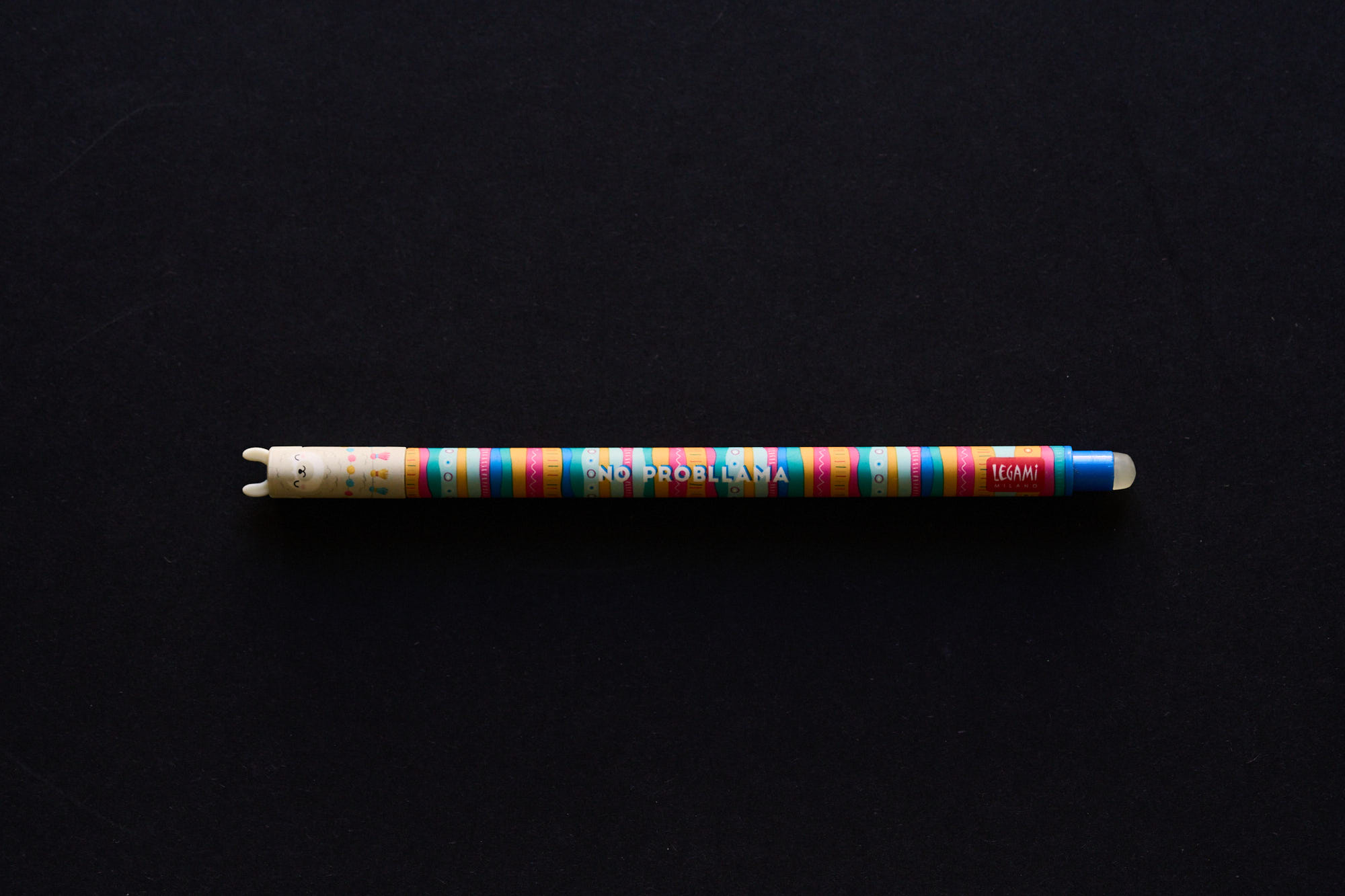One of the most comforting metaphors provided by computer programs is and remains the undo button. Being able to completely undo actions and restore the previous state without loss would also be a wonderful superpower in the analog world.
The gel pens from Legami come pretty close to this ideal. Anyone with children of primary school age will be familiar with the pens – they are basically very simple, cute-looking items that come in all kinds of designs and sell well accordingly. Children, in particular, are known to be passionate collectors and accumulators of things and may have their field day with the available pens: there are numerous animal motifs in particular, but also special editions, e.g., for Halloween, Christmas, or Easter.
The aesthetic variety keeps the desire constant, but the real attraction lies in its functionality. Structurally, they are related to pencils with an eraser attached to the back end. The Legami pencil repeats this form but surpasses it in its realization. It realizes the idea that lies dormant in the pencil as an unfulfilled promise.

With a pencil, unless you have written very delicately on the paper, you can still see that something has been erased and overwritten (the same applies to fountain pens and ink erasers). With the Legami pen, writing can be removed without a trace; the tip does not press into the paper, nor does any ink residue remain.
In 1981, computer scientist Jon Postel coined the beautiful phrase: “Be conservative in what you do; be liberal in what you accept from others.” Ex-post, the Legami pen follows precisely this idea.
Learning to write is an old technique – the pen does not add anything fundamentally new. It is “liberal” in that, unlike other tools, it makes learning to write more forgiving. To paraphrase Jon Yablonski, where I found the sentence that applies Postel’s technical law to the user experience and human-centered design: “People don’t behave like machines: We are sometimes inconsistent, often distracted, occasionally error-prone and usually guided by emotions.”
Despite all the criticism of the product’s consumerist and disciplinary pitfalls, the creation of the undo function in analog writing instruments is a great thing that has great psychological effectiveness. Children can scribble away without running the risk of their previous mistakes shining through, which encourages them and gets them into action.
Evil tongues could claim that it would be better to change the overall error culture. Wouldn’t it be much more helpful if nobody was afraid of making their own mistakes visible, if that didn’t result in any disadvantages? Of course, it would. But as we are probably still a long way from that point, design can, where possible, help us get through the checks a little more unscathed.




